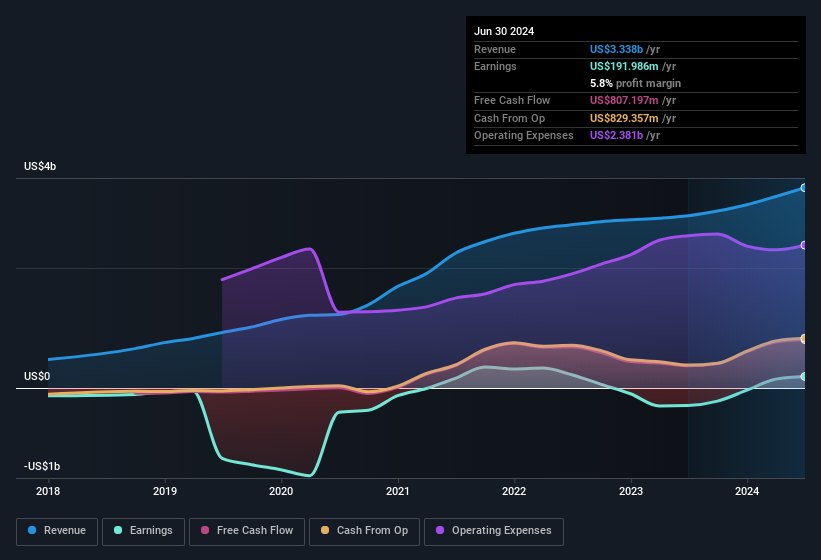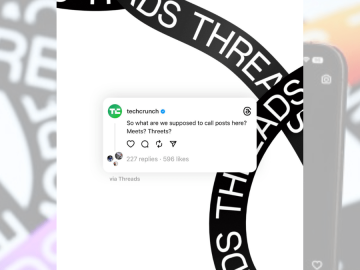Pinterest, Inc.’s (NYSE:PINS) earnings announcement last week was disappointing for investors, despite the decent profit numbers. We did some digging and actually think they are being unnecessarily pessimistic.
See our latest analysis for Pinterest

earnings-and-revenue-history
A Closer Look At Pinterest’s Earnings
One key financial ratio used to measure how well a company converts its profit to free cash flow (FCF) is the accrual ratio. In plain english, this ratio subtracts FCF from net profit, and divides that number by the company’s average operating assets over that period. This ratio tells us how much of a company’s profit is not backed by free cashflow.
As a result, a negative accrual ratio is a positive for the company, and a positive accrual ratio is a negative. That is not intended to imply we should worry about a positive accrual ratio, but it’s worth noting where the accrual ratio is rather high. Notably, there is some academic evidence that suggests that a high accrual ratio is a bad sign for near-term profits, generally speaking.
For the year to June 2024, Pinterest had an accrual ratio of -1.43. That implies it has very good cash conversion, and that its earnings in the last year actually significantly understate its free cash flow. To wit, it produced free cash flow of US$807m during the period, dwarfing its reported profit of US$192.0m. Pinterest shareholders are no doubt pleased that free cash flow improved over the last twelve months. Having said that, there is more to the story. The accrual ratio is reflecting the impact of unusual items on statutory profit, at least in part.
That might leave you wondering what analysts are forecasting in terms of future profitability. Luckily, you can click here to see an interactive graph depicting future profitability, based on their estimates.
How Do Unusual Items Influence Profit?
Pinterest’s profit was reduced by unusual items worth US$127m in the last twelve months, and this helped it produce high cash conversion, as reflected by its unusual items. This is what you’d expect to see where a company has a non-cash charge reducing paper profits. It’s never great to see unusual items costing the company profits, but on the upside, things might improve sooner rather than later. We looked at thousands of listed companies and found that unusual items are very often one-off in nature. And, after all, that’s exactly what the accounting terminology implies. Pinterest took a rather significant hit from unusual items in the year to June 2024. All else being equal, this would likely have the effect of making the statutory profit look worse than its underlying earnings power.
Story continues
Our Take On Pinterest’s Profit Performance
Considering both Pinterest’s accrual ratio and its unusual items, we think its statutory earnings are unlikely to exaggerate the company’s underlying earnings power. Based on these factors, we think Pinterest’s underlying earnings potential is as good as, or probably even better, than the statutory profit makes it seem! If you want to do dive deeper into Pinterest, you’d also look into what risks it is currently facing. Case in point: We’ve spotted 2 warning signs for Pinterest you should be aware of.
After our examination into the nature of Pinterest’s profit, we’ve come away optimistic for the company. But there is always more to discover if you are capable of focussing your mind on minutiae. Some people consider a high return on equity to be a good sign of a quality business. So you may wish to see this free collection of companies boasting high return on equity, or this list of stocks with high insider ownership.
Have feedback on this article? Concerned about the content? Get in touch with us directly. Alternatively, email editorial-team (at) simplywallst.com.
This article by Simply Wall St is general in nature. We provide commentary based on historical data and analyst forecasts only using an unbiased methodology and our articles are not intended to be financial advice. It does not constitute a recommendation to buy or sell any stock, and does not take account of your objectives, or your financial situation. We aim to bring you long-term focused analysis driven by fundamental data. Note that our analysis may not factor in the latest price-sensitive company announcements or qualitative material. Simply Wall St has no position in any stocks mentioned.
Have feedback on this article? Concerned about the content? Get in touch with us directly. Alternatively, email editorial-team@simplywallst.com




